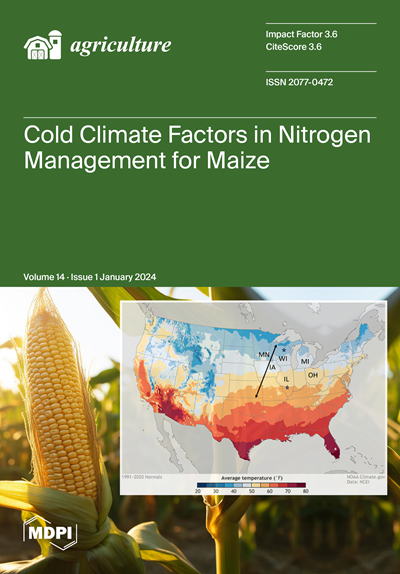Genetic Variability of Oil Palm in Mexico: An Assessment Based on Microsatellite Markers
IF 3.6
2区 农林科学
Q1 AGRONOMY
引用次数: 0
Abstract
Oil palm (Elaeis guineensis Jacq.) has become the largest source of vegetable oil in the world. It is known that all existing genotypes of this species are related, so their genetic variability is considered to be low. In Mexico, all oil palm plantations are located in the southeast of the country, and they are established with different origins seeds, which has caused poor yields and resulted in the need to establish a genetic improvement program. Therefore, in this study, the extent of genetic diversity among 151 oil palm accessions from all producing regions of Mexico was assessed with twenty simple sequence repeats (SSRs) and seven random amplified microsatellite (RAM) markers. The markers utilized proved to be useful in revealing high existing genetic variability, with a total of 1218 and 708 alleles detected and polymorphic information content (PIC) of 0.96 and 0.91 for RAM and SSR, respectively. The genetic distance among all accessions of oil palm collected ranged between 31% and 82% for similarity. Accessions from Tabasco and Veracruz presented the greatest and smallest genetic diversity, respectively. These results can allow breeding strategies to be established for the genetic improvement of this crop in Mexico.墨西哥油棕的遗传变异:基于微卫星标记的评估
油棕(Elaeis guineensis Jacq.)已成为世界上最大的植物油来源。已知该物种的所有现有基因型都是相关的,因此它们的遗传变异性被认为是低的。在墨西哥,所有的油棕种植园都位于该国的东南部,它们是用不同来源的种子建立的,这导致了产量低,并导致需要建立一个遗传改进计划。因此,本研究利用20个简单序列重复(SSRs)和7个随机扩增微卫星(RAM)标记对墨西哥所有产区的151份油棕材料的遗传多样性程度进行了评估。所利用的标记显示了较高的遗传变异,共检测到1218个和708个等位基因,RAM和SSR的多态性信息含量(PIC)分别为0.96和0.91。所收集的所有油棕种质间的遗传距离在31% ~ 82%之间。来自塔巴斯科和韦拉克鲁斯的材料分别表现出最大和最小的遗传多样性。这些结果可以为墨西哥这种作物的遗传改良建立育种策略。
本文章由计算机程序翻译,如有差异,请以英文原文为准。
求助全文
约1分钟内获得全文
求助全文
来源期刊

Agriculture-Basel
Agricultural and Biological Sciences-Food Science
CiteScore
4.90
自引率
13.90%
发文量
1793
审稿时长
11 weeks
期刊介绍:
Agriculture (ISSN 2077-0472) is an international and cross-disciplinary scholarly and scientific open access journal on the science of cultivating the soil, growing, harvesting crops, and raising livestock. We will aim to look at production, processing, marketing and use of foods, fibers, plants and animals. The journal Agriculturewill publish reviews, regular research papers, communications and short notes, and there is no restriction on the length of the papers. Our aim is to encourage scientists to publish their experimental and theoretical research in as much detail as possible. Full experimental and/or methodical details must be provided for research articles.
 求助内容:
求助内容: 应助结果提醒方式:
应助结果提醒方式:


